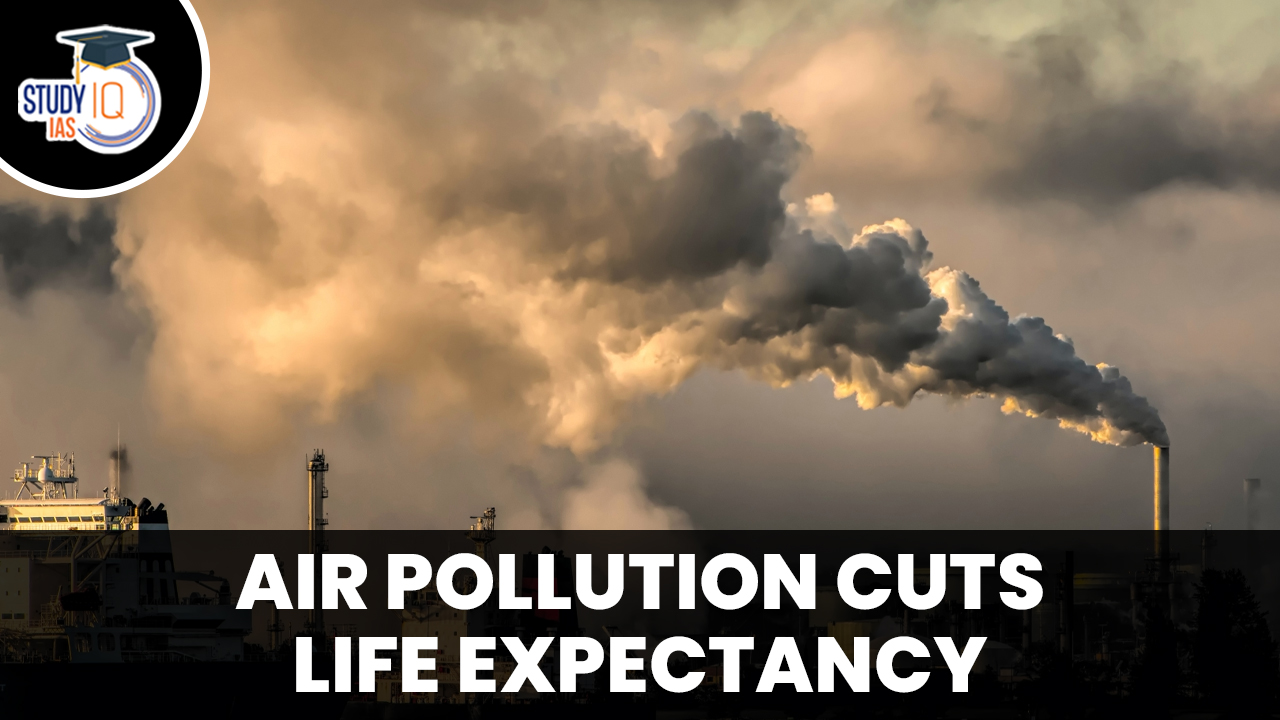Table of Contents
Context: According to the report ‘Air Quality Life Index (AQLI) Annual Update 2023’ by the University of Chicago’s Energy Policy Institute, poor air quality takes 5.3 years off the life of a person in India.
Key Highlights of the Report
- Air pollution and the South Asia:
- South Asia is home to the most polluted countries of Bangladesh, India, Nepal, and Pakistan, accounts for more than half of the total life years lost globally due to high pollution.
- Bangladesh remains the most polluted country in the world.
- The average person living in Bangladesh, India, Nepal, and Pakistan is exposed to particulate pollution levels that are 51.3% higher than at the turn of the century.
- Air pollution is reducing the life span of people living in South Asia by 5.1 years, according to the report.
- Reasons behind the spike in air pollution: The uptick in air pollution in South Asia is an outcome of rapid industrialization, economic development, and population growth, which increased energy demand and fossil fuel use across the region.
- In India and Pakistan, the number of vehicles on the road has increased about four-fold since the early 2000s. The number of vehicles roughly tripled in Bangladesh from 2010 to 2020.
- Electricity production using fossil fuels tripled between 1998 and 2017 in Bangladesh, India, Nepal and Pakistan combined.
- Air Pollution and India:
- In India, the second most polluted nation, all 1.3 billion people live in areas where the annual average particulate pollution level surpasses the WHO guideline.
- In India, on average, poor air quality takes 5.3 years off the life of a person, the report added.
- In contrast, cardiovascular diseases decrease the average Indian’s life expectancy by around 4.5 years, while child and maternal malnutrition reduce life expectancy by 1.8 years.
- The report said from 1998 to 2021, average annual particulate pollution increased by 67.7%, further reducing average life expectancy by 2.3 years.
- Between 2020 and 2021, PM2.5 level in India increased from 56.2 µg/m3 to 58.7 µg/m3, which is 10 times more than the WHO guideline.
- The most polluted region of the country is “the Northern Plains, where more than a half billion people live”.
- Notably, Delhi’s annual average PM2.5 level in 2021 was found to be 126.5 µg/m3 and the life expectancy of an average person living in the city has shortened by 11.9 years.
- A 2022 study, published in the journal Lancet, found that air pollution caused more than 16.7 lakh premature deaths in India in 2019.
- Out of the total deaths, 9.8 lakh were caused by PM2.5 pollution, and another 6.1 lakh by household air pollution.
Various Initiatives undertaken by Government for mitigation of Air Pollution
| National Clean Air Programme (NCAP) |
|
| Graded Response
Action Plan (GRAP) |
|
| System of Air Quality and Weather Forecasting and Research (SAFAR) |
|
| About National Air Quality Index (AQI) |
|
| For Reducing Vehicular Pollution |
|


 Serious Fraud Investigation Office (SFIO...
Serious Fraud Investigation Office (SFIO...
 Article 142 of Indian Constitution, Sign...
Article 142 of Indian Constitution, Sign...
 Pakistan-Occupied Kashmir (PoK): History...
Pakistan-Occupied Kashmir (PoK): History...





















